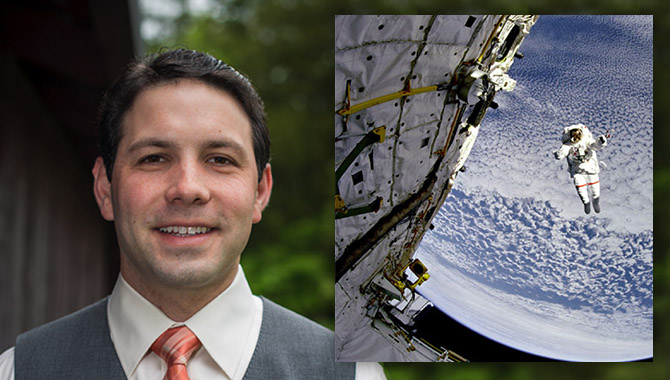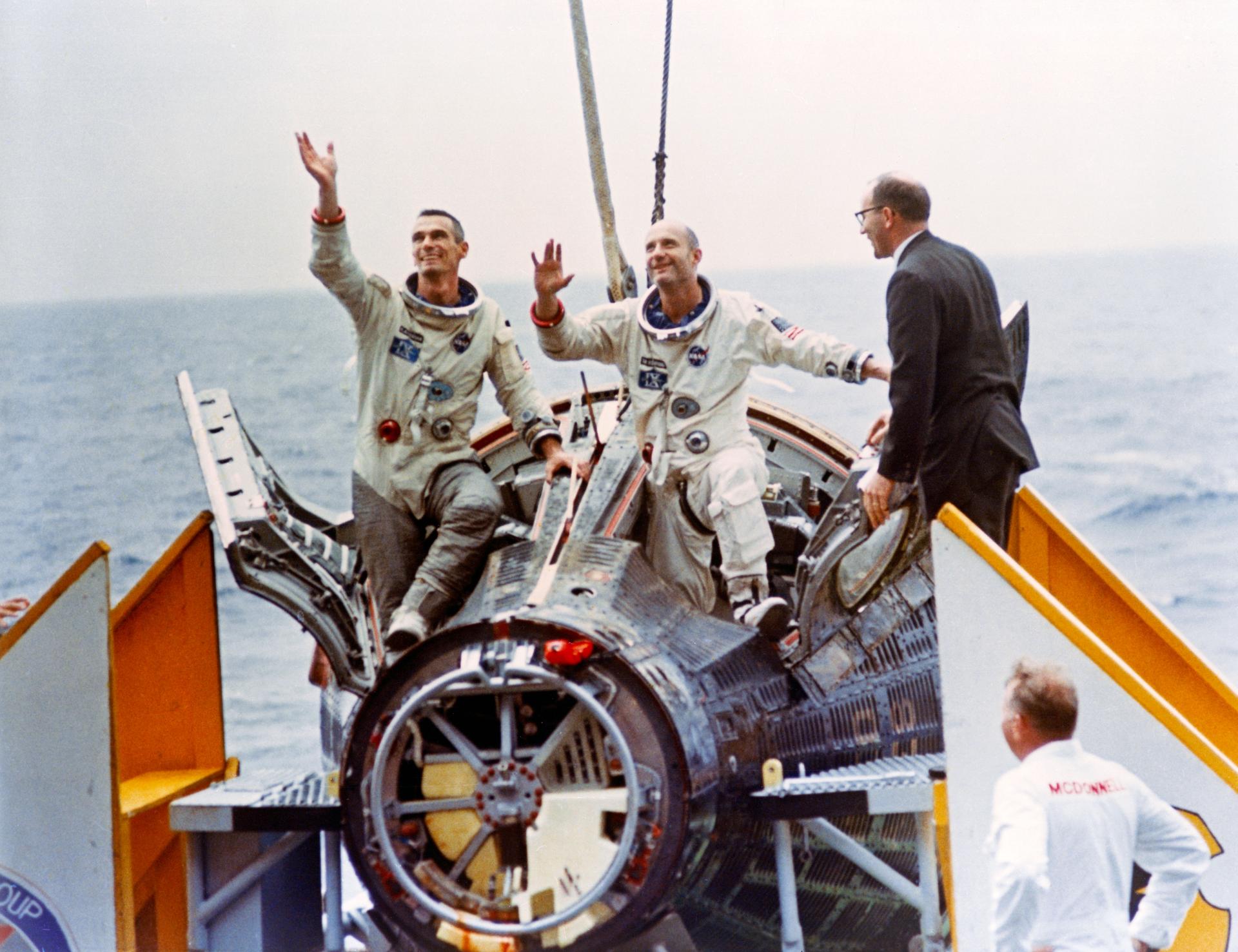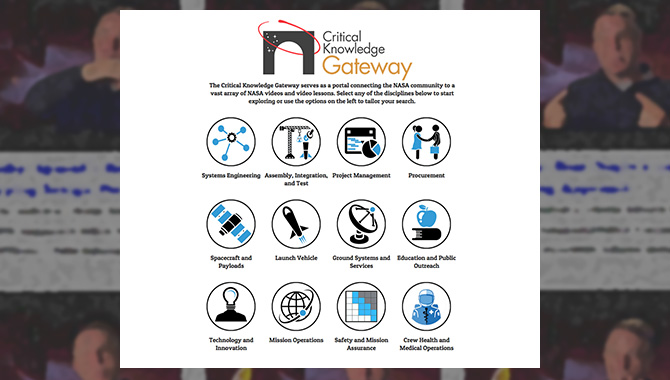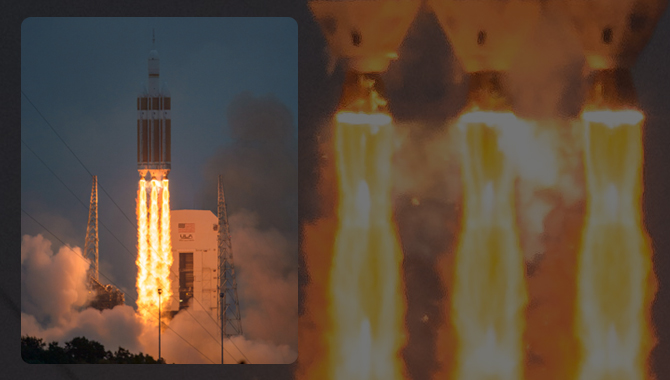
Patrick Johnson, Human Exploration Operation’s Chief Knowledge Officer
Photo Credit: NASA
Patrick Johnson discusses knowledge sharing in the Human Exploration and Operations Mission Directorate.
Disclaimer: This material is being kept online for historical purposes. Though accurate at the time of publication, it is no longer being updated. The page may contain outdated information or broken links. Current Knowledge Community Corner articles are available here.
Patrick Johnson, Human Exploration and Operations Mission Directorate’s Chief Knowledge Officer, discusses knowledge management and services, focusing on how knowledge services best works within HEO’s programs and projects and across the Agency, to become more influential to mission success. He also emphasizes that the culture of learning and finding experts is especially critical when lessons learned might be seen as just another requirement.
Johnson joined NASA in early 2014 as a program specialist, working on Technical Facility Utilization, Construction of Facilities (CoF), and Historical Preservation/NEPA. Previously, he served as a project manager at ARES Corporation, managing two NASA contracts in HEO and Office of Safety and Mission Assurance. In that capacity, he contributed significantly to the Risk and Knowledge Management products developed by former HEO CKO, David Lengyel. Johnson received his Bachelor of Science in Organizational Development from Vanderbilt University, where he also played football as a place kicker. Johnson later returned to Vanderbilt where he earned his Masters of Business Administration.
Do you have a formal or informal knowledge management and services strategy?
Conceptually, we facilitate knowledge sharing amongst the programs in The Human Exploration and Operations Mission Directorate. That is our overarching goal: to advocate and orchestrate a culture of sharing and learning. We fulfill that goal by creating mission specific knowledge captures as our objectives in the form of video interviews. Over the last few years, we’ve satisfied objectives of completing Ares 1-X Test Flight, Space Shuttle Program Transition & Retirement, and ISS lessons learned captures and made them publicly available on the Critical Knowledge Gateway. Those web-based knowledge sharing modules focus on three major programs for HEO. The majority of our work is program-oriented so our strategy is specific to getting lessons learned and best practices from program executives, program managers, and engineering discipline leads. These lessons and practices are categorized into communications and human resources, processes and procedures, and technical deliverables, which in most cases relate directly to launch vehicles, spacecraft, or ground support equipment. Presently, we are in the process of formally documenting this strategy.
What is the best way to work more aggressively to ensure that the workforce here at NASA is learning from across the Agency?
The best way is two-fold: awareness and learning with both building towards a culture of knowledge sharing. The visibility we’ve gotten through the Aerospace and Safety Advisory Panel (ASAP), as they have made critical knowledge activities an important and monitored activity, has made it widely known that we perform critical knowledge capture across the Agency. I think it has been an effective strategy that Ed Hoffman has executed with his access to the top levels of management, mission directorates and center directors, getting buy-in at the top levels. That culture can be shared throughout the organizational chart to program and project managers and discipline leads. That has helped increase awareness.
Now the federated approach tactically works in creating a pulse of learning about knowledge services. The representation is crucial of the Chief Knowledge Officers at the Center and Mission Directorate levels and the Points of Contact at supporting organizations. Sharing across the organization and working at a tactical, horizontal level creates a mesh with the strategic awareness coming down from Headquarters from the strategic level. Having knowledge sharing going on within organizations across the Agency emphasizes that we need to make knowledge services work more effectively. We are now focusing on more accessible and visible learning tools, to aggressively transfer what we know (NASA’s 50 years of cumulative corporate knowledge). This process begins with NASA’s workforce knowing where to go and who to go to in order to find knowledge.
Within HEO, we leverage the Google and YouTube tag and search capabilities to employ the best search engine capabilities to improve find-ability and accessibility. If you have a problem or a question, we want you to be able to find that answer from our knowledge repositories as quickly as possible and not be blocked from the information you want because it is locked down behind a firewall. From our perspective of tactically improving our services, we need to have all our resources in a clearly defined place, where they are easily searchable or findable. We’ve established that place as the Critical Knowledge Gateway.
Are there other highly technical organizations that have aggressively ensured that the workforce knowledge is being captured from across organizations and industries?
One great example of interagency knowledge transfer was accomplished by the Commercial Orbital Transportation Services (COTS) program. Alan Lindenmoyer’s team pulled together subject matter experts from engineering disciplines across the agency. It was a lean organization, made up mostly from grassroots relationships, and it was called the COTS Advisory Team. Team members kept their day jobs, but they would be contacted to work in a consulting role to, say, provide requirements for verification, helping commercial partners. And I think this was an effective way to transfer knowledge: to link the person with the knowledge directly to the people who need the knowledge. Point to point. Transferring knowledge is not a stand-alone activity. We have to have open and ongoing feedback loops. You can have a team of subject matter experts there on demand, where the people designing the system talk directly to the people building the system. If there are disconnects, they can go from point to point to swiftly find solutions.
What do you see as the biggest challenge to knowledge sharing that has impacted your organization?
NASA programs have a vast number of requirements so sometimes knowledge transfer is considered to be an afterthought or another requirement that has to be checked off. Knowledge sharing is misunderstood by many. There needs to be a re-branding of knowledge services. It is more than just writing and filing lessons learned at the end of a project. There needs to be a culture of sharing where it is seen as process improvement. We need advocates from within programs or projects who understand the importance of continual learning and improving processes, that do not see knowledge sharing as just a one-time deal. It’s not, “Said it, forget it.” It is important to do milestones and After Action Reviews, but knowledge services is so much more than that. It should be more a constant reflection on where you are right now and what steps can be taken to improve it.
Is there a best or leading practice on how to assign personnel with explicit responsibility to capture and evaluate and share critical knowledge?
There is power in being willing to share, especially for those who have explicit responsibility to share knowledge. Knowledge practitioners are knowledge brokers, connecting those who have the knowledge with those who need that specific knowledge. This is most effectively implemented when programs and projects have a knowledge advocate or champion inside the organization already. These knowledge champions recognize the importance of reflection, continual improvement, and learning from past mistakes. They can partner with their local Chief Knowledge Officer to facilitate knowledge sharing activities, which can take on many different forms – from Pause and Learns, Video Case Studies, or other activities or initiatives found on the Knowledge Map. When we help people find the expert with the knowledge, we’re creating advocacy for knowledge services. People see that you’ve helped them make an informed decision, and they are more capable of understanding what Knowledge Services is, and that it is of real value.
Read other interviews from NASA Chief Knowledge Officers.









